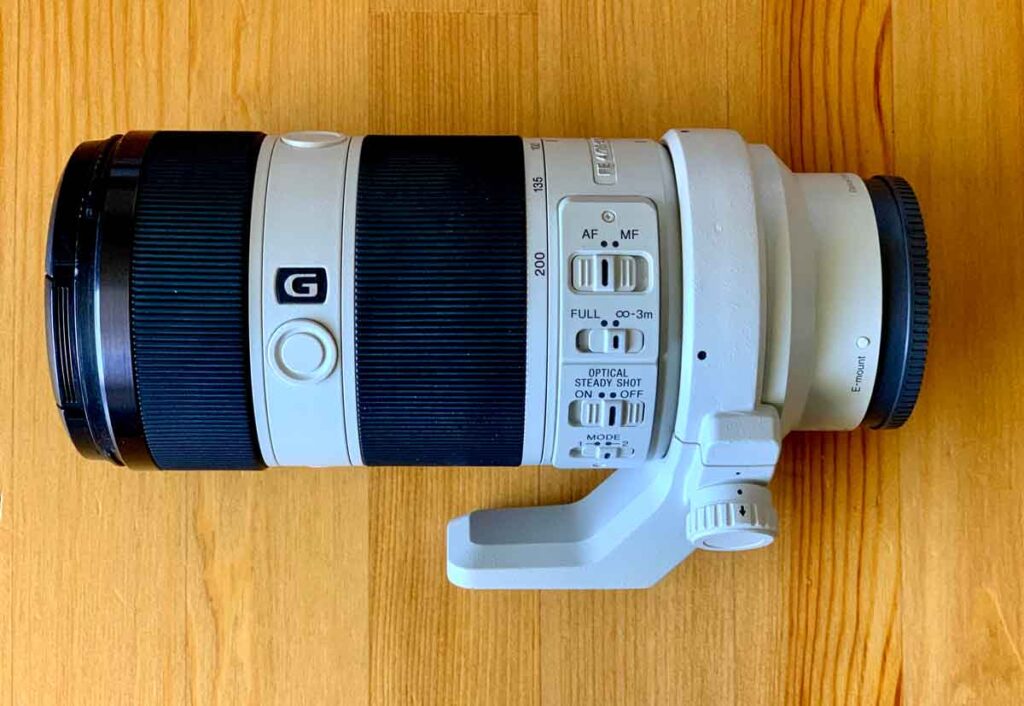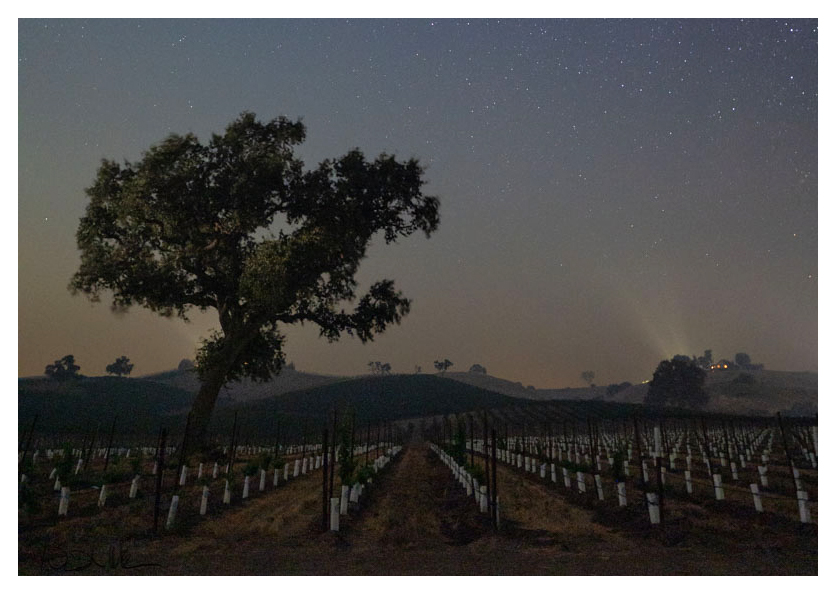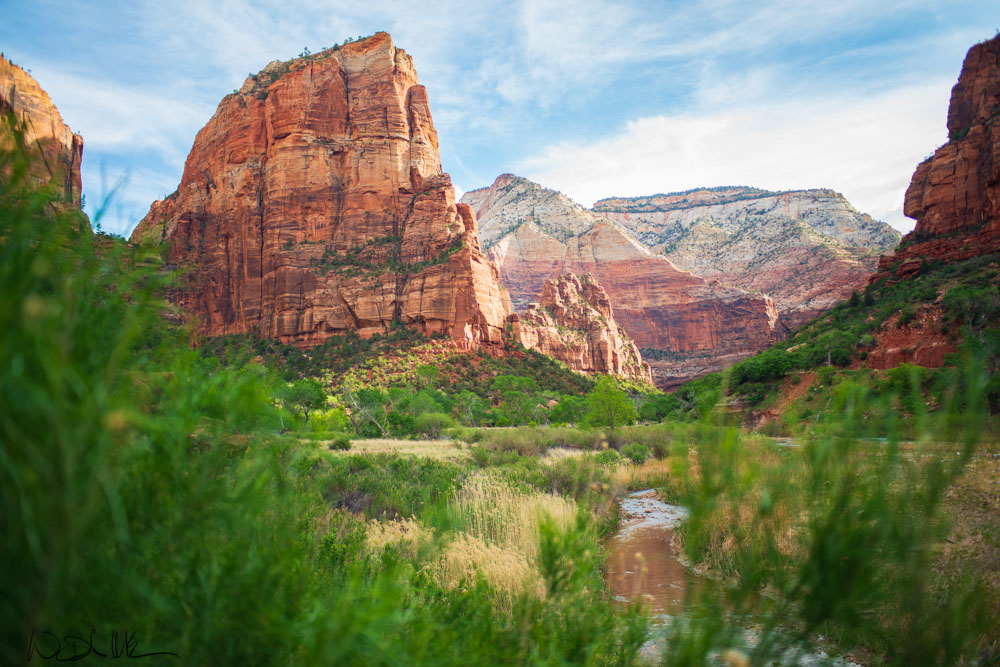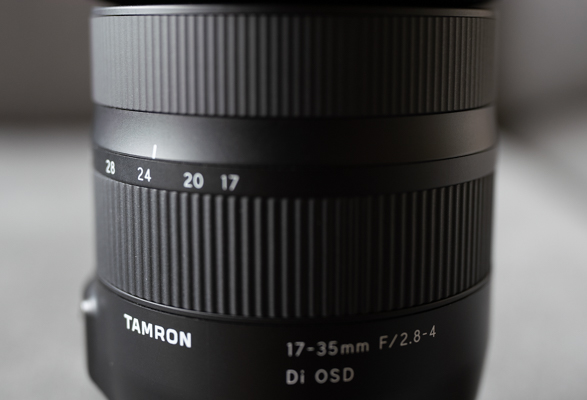When it comes to telephoto lenses, weight can mean everything, but sometimes less weight means sacrificing performance.
I’m always in the market for the lightest camera gear, and Sony has become one of the best camera manufacturers for light camera equipment.
In my opinion, the best lightweight telephoto lens for most Sony is the Sony 70-200 2.8 GM ii. It’s light, sharp, and compares well with the Sony 100-400 4-5.6 with a 2x extender.
In this article, I’ll compare the lightest camera lenses for Sony and share my thoughts on the best lens for the money.
Listed below are all the best lightweight telephoto lenses for Sony full frame listed by weight.
| Lens | Price | Weight |
|---|---|---|
| Tamron 28-200 2.8-5.6 | $729 | 1.27 lb / 575.5 g |
| Sony 24-240mm f/3.5-6.3 | $1048 | 1.72 lb / 780 g |
| 70-200mm F4 Macro G OSS II | $1698 | 1.75 lbs / 796 g |
| Tamron 70-180 2.8 | $1199 | 1.78 lbs/ 807 g |
| Sony 70-200 G f/4 | $1498 | 1.85 lb / 840 g |
| Sony 70-300mm f/4.5-5.6 G | $1273 | 1.88 lb / 854 g |
| Sony 70-200 GM ii f/2.8 (New version) | $2798 | 2.3 lb / 1045 g |
| Sigma 100-400 f/5-6.3 | $949 | 2.5 lb/ 1133 g |
| Tamron 50-400 f/4.5-6.3 | $1299 | 2.54 lb/1153 g |
| Sony 70-200 GM ii f/2.8 + 2x teleconverter (New version) | $2846 | 2. 7 lbs/ 1250 g |
| Sony 100-400 GM f4.5-5.6 | $2498 | 3.24 lbs /1,469.7g (with foot) 3.07 lbs /1,393.2g (without foot) |
| Tamron 150-500 f/5-6.7 | $1399 | 4.14 lb / 1880 g |
| Sony 200-600 5.6-6.3 | $1898 | 4.65 lb / 2115 g |
The best lightweight telephoto lenses for Sony
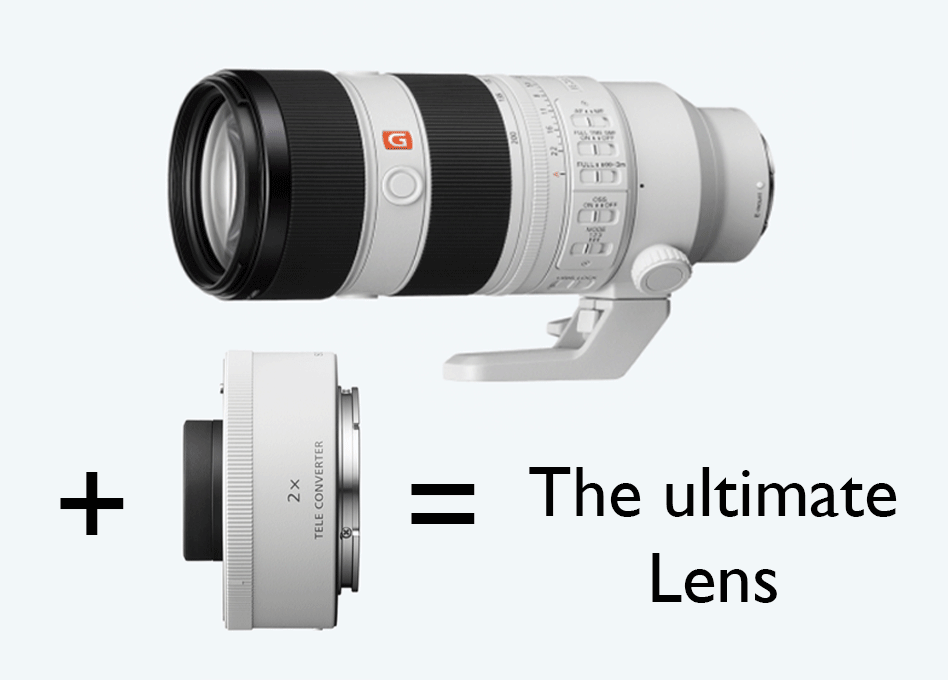
Listed below are my top 5 Sony lenses that will do everything for most users.
1. Sony 70-200 2.8 GM ii (2.3 lb / 1045 g)
The new Sony 70-200 2.8 gm ii is probably my favorite lens from Sony. The lens is one of Sony’s sharpest lenses and it weighs almost the same as the 70-200 f4 lens. It focuses extremely fast and with the 2x teleconverter this lens becomes a 140-400mm with the same aperture speed as the Sony 100-400. It’s better than the 70-200 f4 in every way and only slightly heavier.
Read my full comparison with the 100-400 here.
Who is it for?
- Portraits/Weddings
- Action
- Events
- Sports
- Wildlife photographers
2. Sony 100-400 4-5.6 GM
The Sony 100-400 is my favorite focal length. I love it because it’s the best in-between telephoto lens, and it’s fast and sharp. It’s a great lens for sports, wildlife, portraits, and landscapes. It’s not as light as the sigma 100-400, but it’s much faster and sharper.
Who is it for?
- Sports
- Wildlife photographers
3. Sony 200-600 5.6-6.3 (4.65 lb / 2115 g)
If you’re shooting mostly wildlife, the Sony 200-600 5.6-6.3 is the lens of choice. The autofocus and sharpness is on par with the Sony 100-400 gm. The only downside about this lens is its versatility. It’s not a great lens for portraits or landscapes due to its size and weight.
Who is it for?
- Sports
- Wildlife photographers.
4. Tamron 150-500 4.5-6.3 (4.14 lb / 1880 g)
The Tamron 150-500 f5-6.7 gives you an in-between option for the Sony 100-400 and 200-600. It’s fast, relatively light, and sharp. It’s not quite as fast as the Sony lenses on this list, but it can compete and it’s about half the price. Similar to the 200-600, this lens is not for portrait or landscape photographers.
Who is it for?
- Most Sports
- Wildlife photographers
5. Sigma 100-400 f/5-6.3 (2.5 lb/ 1133 g)
The Sigma 100-400 is a great focal length and light, but it doesn’t it has a much slower aperture speed and the sharpness isn’t nearly as good as the competitors on this list. If you need a budget 100-400 lens, go with the sigma.
Who is it for?
- Landscape photographers
- Beginner sports photographers
- Beginner Wildlife photographers.
6. Tamron 50-400 f/4.5-6.3
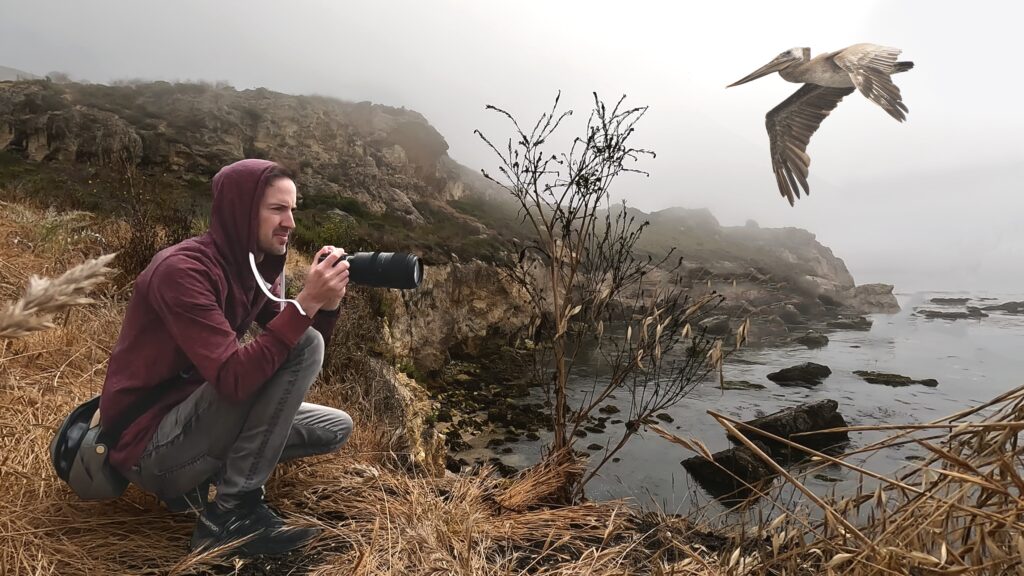
The Tamron 50-400 was released in September 2022. It’s better than the Sigma 100-400 in almost every way. It’s perfect if you want an everything lense and you don’t tend to shoot wide or if you want a great telephoto lens that’s cheaper and lighter than the Sony 100-400.
Who is it for?
- Landscape photogeraphers
- Beginner sports photographers
- Beginner Wildlife photographers.
It’s for landscape photographers who need to isolate the background to create a cleaner image. It’s for beginner wildlife photographers who can’t afford a $2000+ lens. Who is it not for? It’s not for professional sports and wildlife photographers. It’s also not for portrait photographers.
Which telephoto lens should you choose?
Maybe you primarily shoot weddings, landscapes, wildlife, or sports, or maybe you’re a hobbyist that does it all. Here are a few options to help you decide which lightweight lens is best for your needs.
Portraits
Sports
- Sony 70-200 2.8 gm ii with 2x extender
- Sony 200-600 5.6-6.3
Landscape
Wildlife
Hobbist
- Sony 70-200 2.8 gm ii with 2x extender
- Tamron 150-500 f5-6.7
- Tamron 28-200 2.8-5.6
What’s the best telephoto lens for the price?
Early I stated my favorite telephoto lens is the Sony 70-200 2.8 GM ii, but it’s $2798. Most people can’t afford that, so the best telephoto lens for the price is the Tamron 50-400. It’s light, affordable, and it has an amazing reach almost any focal length.
In general, think the perfect telephoto focal length is 100-500mm, but to get that lens you need a Canon camera. Your next best option is the Tamron 150-500 f5-6.7. It’s inexpensive and it’s sharp. It’s one pound heavier than the Sony 100-400mm, but it gives you an extra 100mm and it’s less than half the price.
What Sony telephoto lenses are the sharpest?
If you need a sharp telephoto lens that will do everything, get the Sony 70-200 2.8 gm ii with the 2x extender. This lens is sharp, fast, light, and it’s great for portraits, events, landscapes, wildlife, and sports. It’s top on this list for a reason, and the best telephoto lens on the market. Unfortuantely it’s almost $3000.
Here are the sharpest telephoto lenses for Sony ranked:
- Sony 70-200 GM ii f/2.8
- Sony 100-400 4-5.6 GM
- Sony 200-600 5.6-6.3 (4.65 lb / 2115 g)
- Tamron 150-500
Summary
Choosing a telephoto lens can be overwhelming. Today we have more options than ever, and there’s still not a perfect lens that will do everything. For me, the Sony 70-200 2.8 ii is still the best option, but I still can’t afford it, so I’ll be sticking with the Tamron 150-500 for now.
I hope this article was helpful. Check out my youtube channel and subscribe below to learn what’s next in photography.

